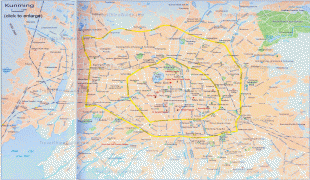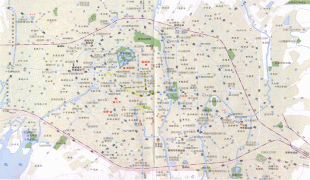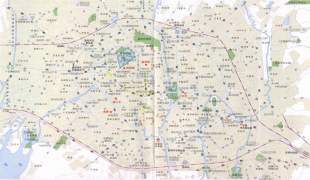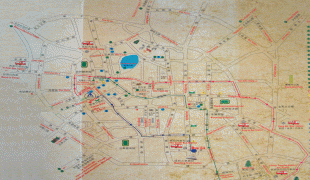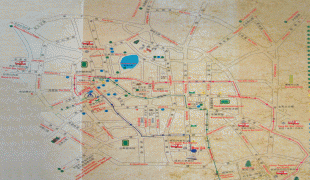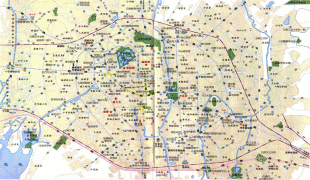Kunming
Kunming consists of an old, previously walled city, a modern commercial district, residential zones and university areas. It is also one of the top 200 cities in the world by scientific research output. The city has an astronomical observatory, and its institutions of higher learning include Yunnan University, Kunming University of Science and Technology, Yunnan University of Finance and Economics, Kunming Medical University, Yunnan Normal University, Yunnan Agricultural University and Southwest Forestry University. On the northeast mountainous outskirt is a bronze temple dating from the Ming dynasty, the largest of its kind in China.
Kunming's economic importance derives from its geographical position. It is near the border with Southeastern Asian countries, serving as a transportation hub in Southwest China, linking by rail to Vietnam and by road to Burma, Laos and Thailand. This positioning also makes it an important trade center in the region. As a gateway to Southeast Asia and South Asia, the Kunming Changshui International Airport is one of the top 40th-busiest airports in the world. Kunming also houses some manufacturing, chiefly the processing of copper, as well as various chemicals, machinery, textiles, paper and cement. Kunming has a nearly 2,400-year history, but its modern prosperity dates only to 1910, when the railway from Hanoi was built. The city has continued to develop rapidly under China's modernization efforts. Kunming's streets have widened while office buildings and housing projects develop at a fast pace. Kunming has been designated a special tourism center and as such sports a proliferation of high-rises and luxury hotels.
The name "Kunming" evolved from an ancient ethnicity named Kunming Yi or Kunming Barbarian, which was a branch of Di-Qiang. The Kunming Yi lived in the neighbouring region of Erhai Lake during the Western Han dynasty. The Han dynasty incorporated the territory of the Dian Kingdom and set a division called Yizhou Commandery in 109 BC; the Han dynasty also incorporated the Kunming Yi into Yizhou Commandery soon after. Therefore, Kunming Yi expanded east to the Lake Dian area later. "Kunming" has acted as a place name since the Three Kingdoms period, but the reference was not clear because this ethnicity occupied a large region. In the Yuan dynasty, the central government set "Kunming County" in modern Kunming; the name "Kunming" has continued to this day.
Some modern research states that the name "Kunming" of Kunming Yi is a cognate word of "Khmer" and "Khmu" that originally meant "people".
Map - Kunming
Map
Country - China
 |
 |
| Flag of China | |
Modern Chinese trace their origins to a cradle of civilization in the fertile basin of the Yellow River in the North China Plain. The semi-legendary Xia dynasty in the 21st century BCE and the well-attested Shang and Zhou dynasties developed a bureaucratic political system to serve hereditary monarchies, or dynasties. Chinese writing, Chinese classic literature, and the Hundred Schools of Thought emerged during this period and influenced China and its neighbors for centuries to come. In the third century BCE, Qin's wars of unification created the first Chinese empire, the short-lived Qin dynasty. The Qin was followed by the more stable Han dynasty (206 BCE–220 CE), which established a model for nearly two millennia in which the Chinese empire was one of the world's foremost economic powers. The empire expanded, fractured, and reunified; was conquered and reestablished; absorbed foreign religions and ideas; and made world-leading scientific advances, such as the Four Great Inventions: gunpowder, paper, the compass, and printing. After centuries of disunity following the fall of the Han, the Sui (581–618) and Tang (618–907) dynasties reunified the empire. The multi-ethnic Tang welcomed foreign trade and culture that came over the Silk Road and adapted Buddhism to Chinese needs. The early modern Song dynasty (960–1279) became increasingly urban and commercial. The civilian scholar-officials or literati used the examination system and the doctrines of Neo-Confucianism to replace the military aristocrats of earlier dynasties. The Mongol invasion established the Yuan dynasty in 1279, but the Ming dynasty (1368–1644) re-established Han Chinese control. The Manchu-led Qing dynasty nearly doubled the empire's territory and established a multi-ethnic state that was the basis of the modern Chinese nation, but suffered heavy losses to foreign imperialism in the 19th century.
Currency / Language
| ISO | Currency | Symbol | Significant figures |
|---|---|---|---|
| CNY | Renminbi | ¥ or 元 | 2 |
| ISO | Language |
|---|---|
| ZH | Chinese language |
| UG | Uighur language |
| ZA | Zhuang language |











